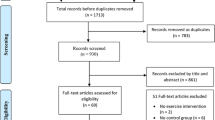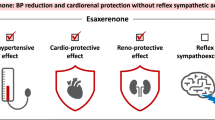Abstract
1. Six patients with long-standing physiologically complete cervical spinal cord lesions and two normal subjects were examined.
2. In the tetraplegic subjects, arterial blood pressure, heart rate, plasma noradrenaline and adrenaline were measured at rest and during bladder percussion, during electrical stimulation of muscles and during infusion of noradrenaline.
3. In the normal subjects arterial blood pressure and heart rate were recorded before and during noradrenaline infusion.
4. Bladder percussion and muscle stimulation caused a rise in plasma noradrenaline from a subnormal level, together with a rise in blood pressure.
5. A similar rise in blood pressure due to noradrenaline infusion occurred at a very much greater level of plasma noradrenaline.
6. It is concluded that hypertension in tetraplegic subjects who have bladder percussion or muscle stimulation, is due to sympathetic overactivity rather than adrenal medullary secretion. Findings are consistent with, but not conclusive of, supersensitivity of the blood vessels of tetraplegic subjects to noradrenaline.
Similar content being viewed by others
Log in or create a free account to read this content
Gain free access to this article, as well as selected content from this journal and more on nature.com
or
References
Christensen, N J (1973). Reduced levels of plasma noradrenaline in patients with thyrotoxicosis. Short title: Plasma noradrenaline in thyrotoxicosis.
Claus-Walker, J, Vallbona, C, Carter, R E . & Lipscomb, H S . (1971). Resting and stimulated endocrine function in human subjects with cervical spinal cord transaction J. Chron. Dis. 24, 193–207.
Corbett, J L, Frankel, H L & Harris, P J (1971a). Cardiovascular changes associated with skeletal muscle spasm in tetraplegic man. J. Physiol. 215. 381–393.
Corbett, J L, Frankel, H L & Harris, P J (1971b). Cardiovascular reflex responses to cutaneous and visceral stimuli in spinal man. J. Physiol. 215, 395–409.
Cunningham, D J C, Guttmann, L, Whitteridge, D & Wyndham, C M (1953). Cardiovascular responses to bladder distension in paraplegic patients. J. Physiol, 121, 581–592.
Debarge, O (1973). Doctor of Philosophy Thesis, University of Oxford.
Engelman, K, Portnoy, B & Lovenberg, W (1968). A sensitive and specific double isotope derivative method for the determination of catecholamines in biological specimens. Amer. J. Sci. 255, 259–268.
Engelman, K & Portnoy, B (1970). A sensitive double isotope derivative assay for norepinephrine and epinephrine. Normal resting human plasma levels. Circulation Res. 26, 53–57.
Goldenberg, M, Pines, K L, Baldwin, E D F, Greene, D G & Roh, C E (1948). The hemodynamic response of man to norepinephrine and epinephrine and its relation to the problem of hypertension. Amer. J. Med. 6, 792–806.
Guttmann, L & Whitteridge, D (1947). Effects of bladder distension on autonomic mechanisms after spinal injuries. Brain, 70, 361–405.
Guttman, L, Munro, A, Robinson, R & Walsh, J (1963). Effects of tilting on the cardio-vascular responses on plasma catecholamine levels in spinal man. Paraplegia, 1, 1.
Head, H & Riddoch, G (1917). The automatic bladder, excessive sweating and some other reflex conditions in gross injuries of the spinal cord. Brain, 40, 188–263.
Kurnick, N B (1956). Automonic hyper-reflexion and its control on patients with spinal cord lesions. Ann. Med. 44, 678–686.
Munro, A F & Robinson, R (1958). Normal levels for plasma adrenaline and noradrenaline compared with those in subjects with complete transverse lesions of the spinal cord. Proc. Physiol. Soc. 141: 4–5.
Naftchi, N E, Lowman, E W, Sell, G H & Rusk, H A (1972). Peripheral circulation and catecholamine metabolism in paraplegia and quadriplegia. Arch. Phys. Med. 53, 357–361.
Riddoch, G & Head, H (1917). The reflex functions of the completely divided spina cord in man compared with those associated with less severe lesions. Brain, 40, 264–402.
Roussan, M S, Abramson, A S, Lippmann, H I & D'Oronzio, G (1966). Somatic and autonomic responses to bladder filling in patients with complete transverse myelopathy. Arch. Phys. Med. Rehab. 47, 450–456.
Videbaek, J, Christensen, N J & Sterndorff, B (1972). Serial determination of plasma catecholamines in myocardial infarction. Circulation, XLVI, 846–855.
Author information
Authors and Affiliations
Rights and permissions
About this article
Cite this article
Debarge, O., Christensen, N., Corbett, J. et al. Plasma catecholamines in tetraplegics. Spinal Cord 12, 44–49 (1974). https://doi.org/10.1038/sc.1974.8
Issue date:
DOI: https://doi.org/10.1038/sc.1974.8
This article is cited by
-
Autonomic dysreflexia in tetraplegic patients: Evidence for α-adrenoceptor hyper-responsiveness
Clinical Autonomic Research (1995)
-
Succinylcholine, cholinoceptors and catecholamines: proposed mechanism of early adverse haemodynamic reactions
Canadian Anaesthetists’ Society Journal (1984)
-
Circulatory changes during mental stress in tetraplegic and paraplegic man
Klinische Wochenschrift (1982)



